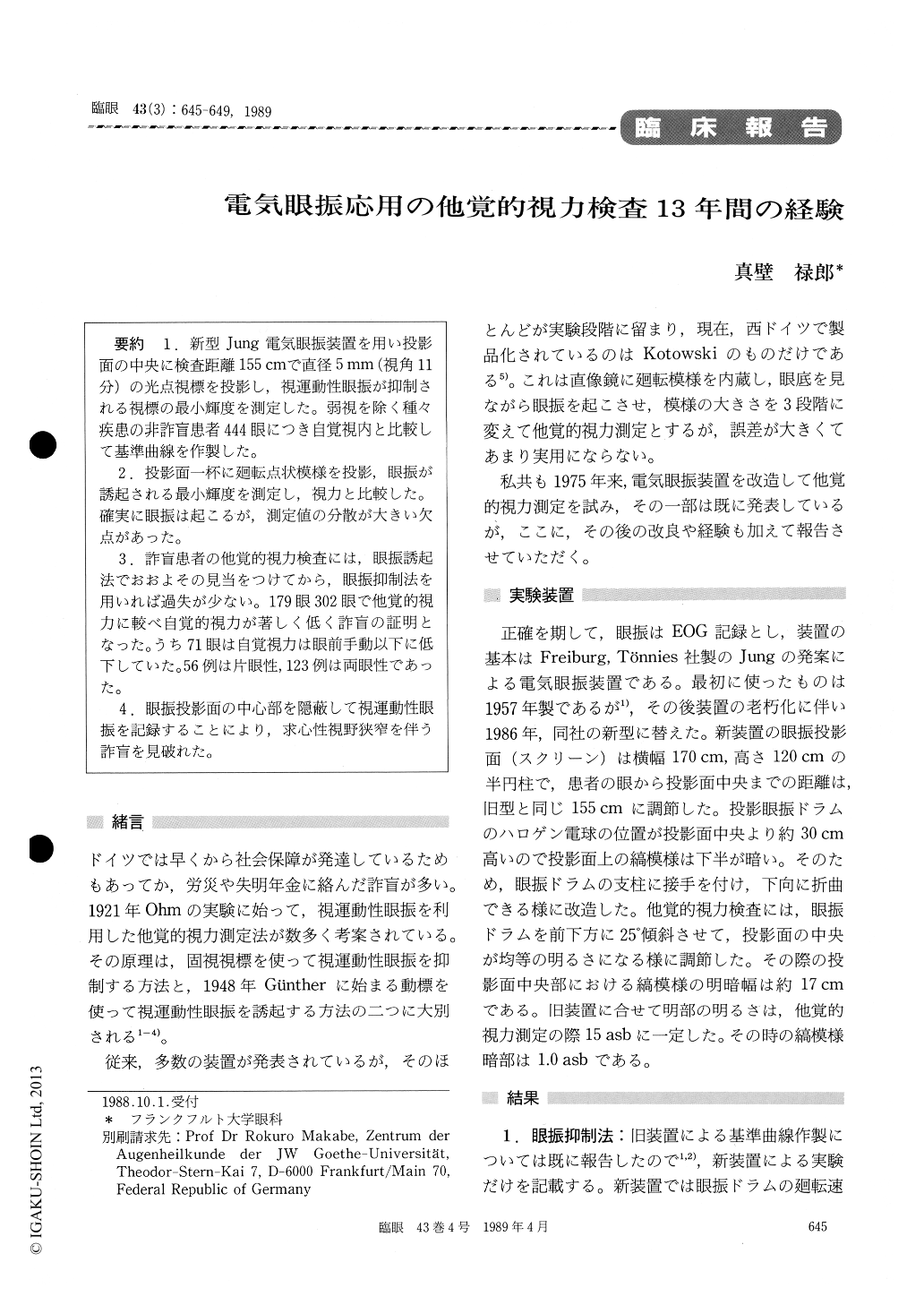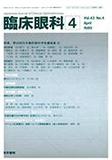Japanese
English
- 有料閲覧
- Abstract 文献概要
- 1ページ目 Look Inside
1.新型Jung電気眼振装置を用い投影面の中央に検査距離155cmで直径5mm (視角11分)の光点視標を投影し,視運動性眼振が抑制される視標の最小輝度を測定した。弱視を除く種々疾患の非詐盲患者444眼につき自覚視内と比較して基準曲線を作製した。
2.投影面一杯に廻転点状模様を投影,眼振が誘起される最小輝度を測定し,視力と比較した。確実に眼振は起こるが,測定値の分散が大きい欠点があった。
3.詐盲患者の他覚的視力検査には,眼振誘起法でおおよその見当をつけてから,眼振抑制法を用いれば過失が少ない。179眼302眼で他覚的視力に較べ自覚的視力が著しく低く詐盲の証明となった。うち71眼は自覚視力は眼前手動以下に低下していた。56例は片眼性,123例は両眼性であった。
4.眼振投影面の中心部を隠蔽して視運動性眼振を記録することにより、求心性視野狭窄を伴う詐盲を見破れた。
Horizontal optokinetic nystagmus is inhibited by a light spot of 11 arc minutes projected onto the center of the screen of an electronystagmograph of Jung. The minimum light intensity that just inhibits optokinetic nystagmus is registered and is compar-ed with the visual acuity in the conventional sense.
Based on a series of examinations in 444 eyes in 226 patients with various diseases except amb-lyopia, a diagram was obtained with allows deduc-tion of visual acuity from the spot intensity with a fair grade of accuracy.
In another series of experiment, a pattern consist-ing of numerous light spots of 3 arc minutes isprojected over the whole screen and is rotated at an angle velocity of 40°per second. The minimum light intensity that just provokes an optokinetic nystag-mus is registered. The value was not well correlat-ed with the visual acuity in the conventional sense.
In practical use, the visual acuity was roughly estimated by nystagmus provocation method. The value was then carefully measured by the nystag-mus inhibition method. This procedure allowed correct diagnosis in 302 eyes of 179 patients who were clinically judged as simulation or aggrava-tion.

Copyright © 1989, Igaku-Shoin Ltd. All rights reserved.


